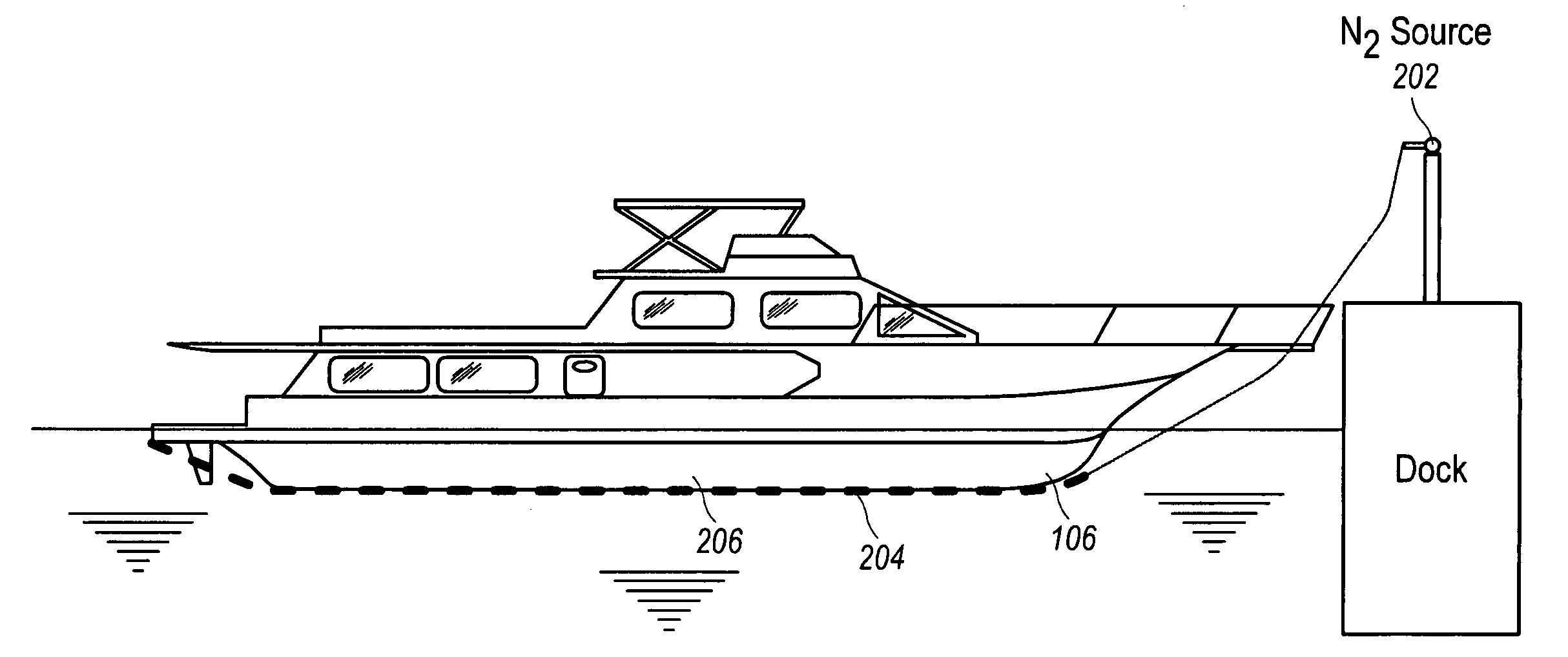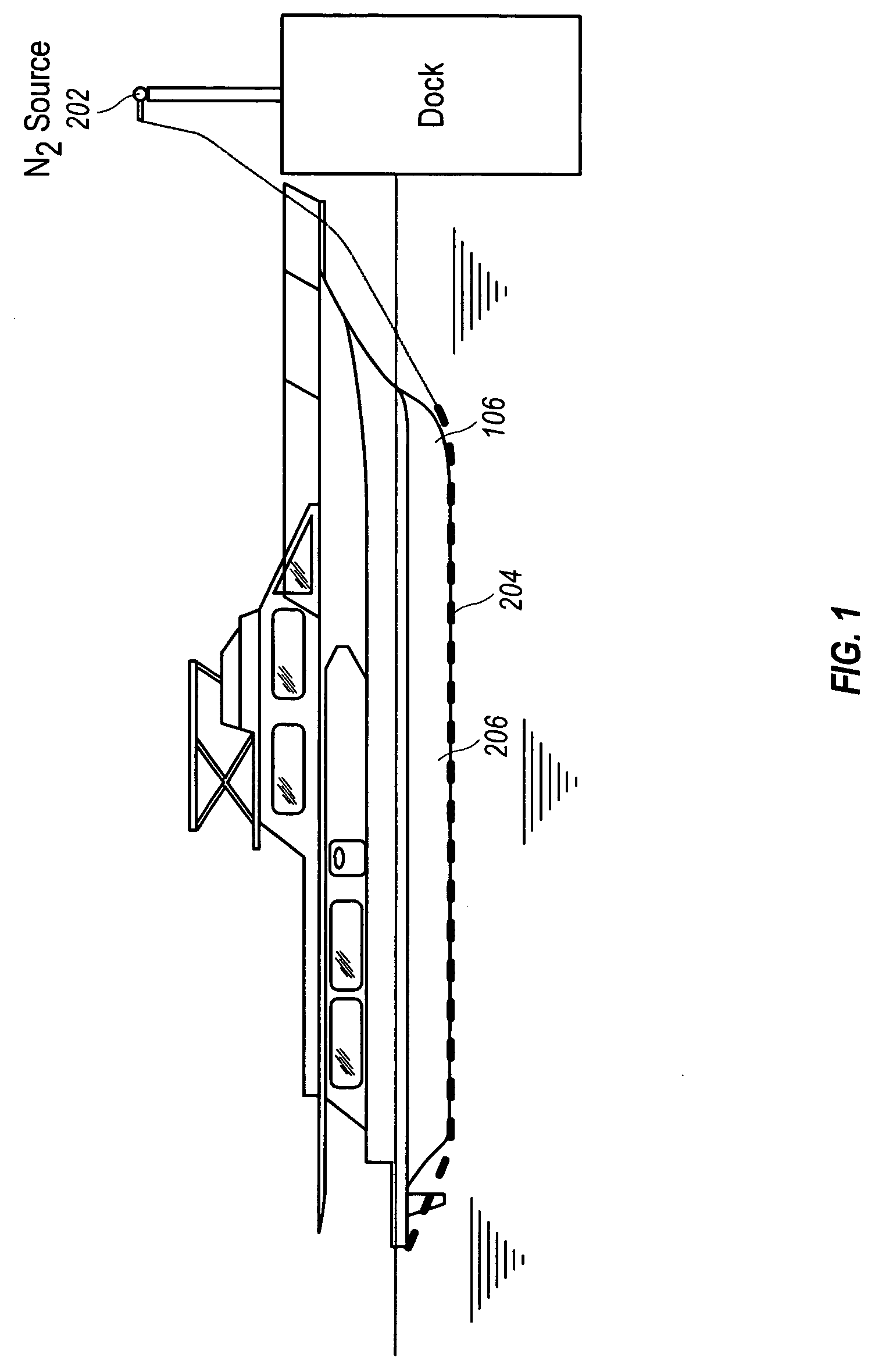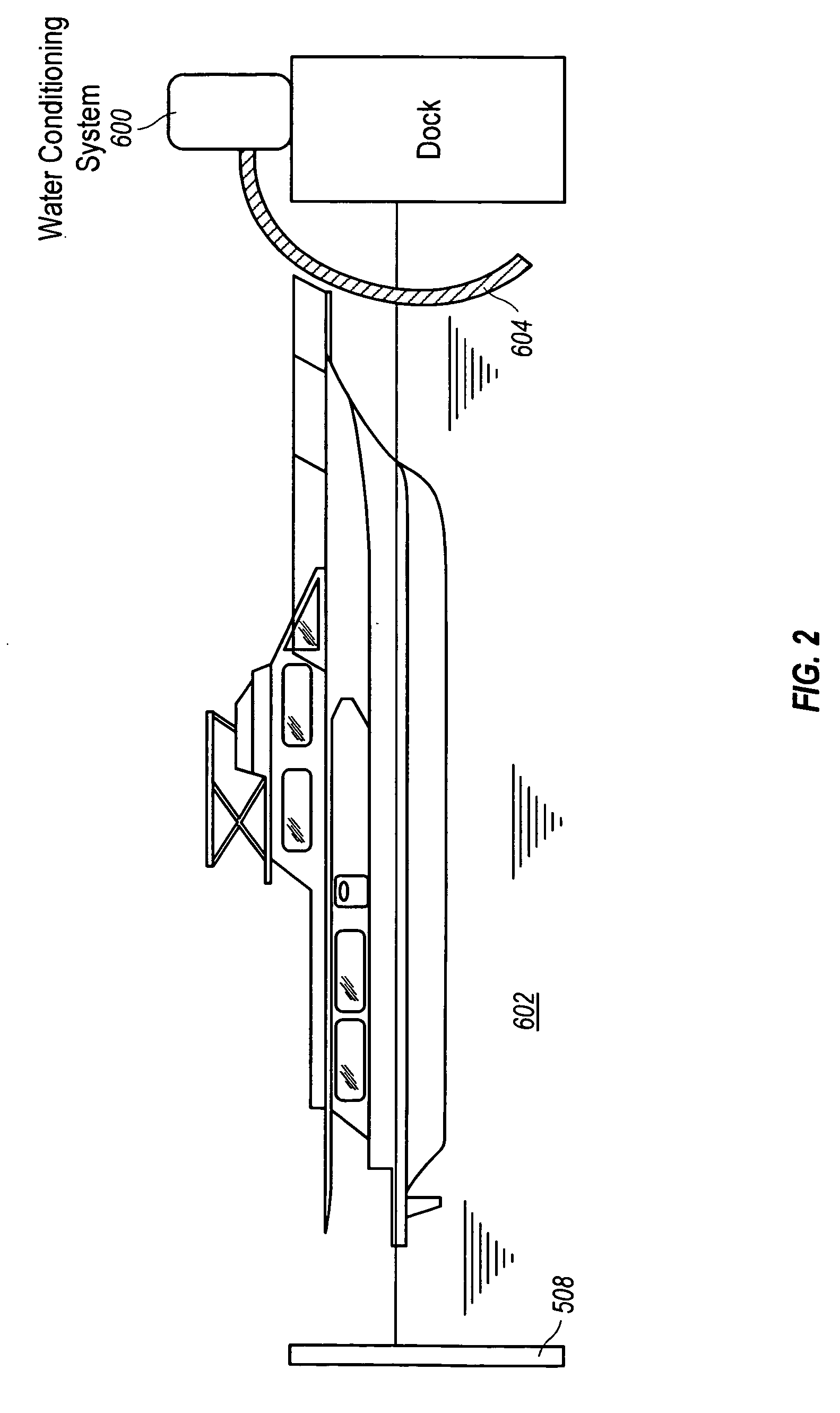Yacht barnacle inhibitor system
a technology of anti-fouling paint and inhibitory system, which is applied in the direction of hulls, vessel cleaning, vessel construction, etc., can solve the problems of reducing maneuverability and speed per unit of fuel used, dragging on the vessel, and significant increase in surface roughness of the hull known as fouling, so as to reduce the frequency of in-water scraping, reduce the reliance on anti-fouling paint, and reduce the frequency of dry-dock scraping
- Summary
- Abstract
- Description
- Claims
- Application Information
AI Technical Summary
Benefits of technology
Problems solved by technology
Method used
Image
Examples
Embodiment Construction
[0038] The numerous innovative teachings of the present application will be described with particular reference to the presently preferred embodiment (by way of example, and not of limitation).
[0039] Since nitrogen bubbling has been shown to deplete oxygen content in bilge water and thereby reduce mollusk growth, the present application teaches that nitrogen bubbled through a soft porous hose along the underside of a boat at a quiet slip where it spends most of the time, will inhibit barnacle growth.
[0040] A porous hose such as a lawn soaker hose can easily be placed on one or both sides of a boat while it is in a slip. This hose could be hooked over the transom and then tied to the bow such that it would lie near the keel. Typically, this is done on both sides of the boat to assure coverage. The porous portion only begins below the water line.
[0041] The hose material is preferably made of a fabric or soft rubber such that if the boat was started up by accident while the hose was...
PUM
 Login to View More
Login to View More Abstract
Description
Claims
Application Information
 Login to View More
Login to View More - R&D
- Intellectual Property
- Life Sciences
- Materials
- Tech Scout
- Unparalleled Data Quality
- Higher Quality Content
- 60% Fewer Hallucinations
Browse by: Latest US Patents, China's latest patents, Technical Efficacy Thesaurus, Application Domain, Technology Topic, Popular Technical Reports.
© 2025 PatSnap. All rights reserved.Legal|Privacy policy|Modern Slavery Act Transparency Statement|Sitemap|About US| Contact US: help@patsnap.com



